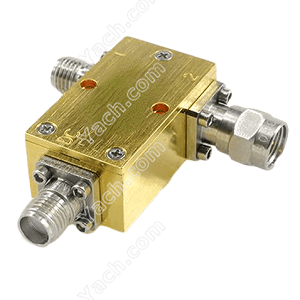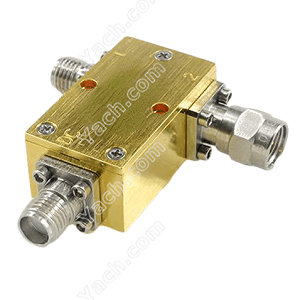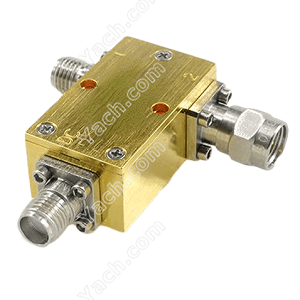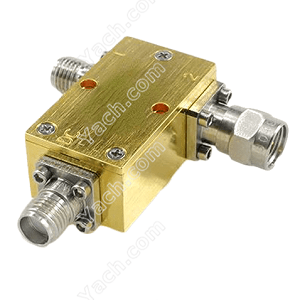Design of broadband low noise amplifier based on feedback technology
 Low noise amplifier is an essential and important component in communication, radar, electronic countermeasure and remote control and telemetry system. It is located in the front end of the RF receiving system. Its main function is to linearly amplify the weak RF signal received by the antenna, suppress various noise interference and improve the sensitivity of the system. Especially with the development of communication, electronic countermeasure and microwave measurement towards broadband, low noise and miniaturization, the design of low noise and broadband amplifier has been paid more and more attention. This paper presents the design of a 50 ~ 300MHz low noise broadband amplifier. The amplifier has excellent gain flatness and noise figure in the working frequency band, and can improve the sensitivity of the receiver.
Low noise amplifier is an essential and important component in communication, radar, electronic countermeasure and remote control and telemetry system. It is located in the front end of the RF receiving system. Its main function is to linearly amplify the weak RF signal received by the antenna, suppress various noise interference and improve the sensitivity of the system. Especially with the development of communication, electronic countermeasure and microwave measurement towards broadband, low noise and miniaturization, the design of low noise and broadband amplifier has been paid more and more attention. This paper presents the design of a 50 ~ 300MHz low noise broadband amplifier. The amplifier has excellent gain flatness and noise figure in the working frequency band, and can improve the sensitivity of the receiver.Broadband implementation and negative feedback principle
The main obstacle of broadband amplifier design is the restriction of the gain bandwidth product of active devices, that is, the gain of active devices decreases by 6dB / octave with the increase of frequency. The common design methods of broadband amplifier are: balanced structure amplifier, negative feedback amplifier, active matching circuit, reactance network matching, broadband resistance matching, distributed amplifier and so on. The negative feedback amplifier has the following obvious advantages: reducing the sensitivity of the whole circuit to the change of transistor performance; Better input impedance matching and lower noise figure are obtained; Increase the stability of the amplifier in the working frequency band; Increase the linearity of the amplifier. Therefore, negative feedback technology is widely used in the design of broadband amplifier.
The feedback network between grid and drain is composed of capacitance, resistance and inductance. The function of capacitor is to prevent the feedback network from affecting the DC bias of transistor; The function of the inductance is to reduce the feedback of the amplifier at the high end of the frequency and offset the decrease of the gain of the amplifier with the increase of the frequency. The flatness of the gain of the amplifier can be adjusted by adjusting the size of the inductance. The resistance plays the main role of feedback. The amount of feedback can be adjusted by adjusting the resistance value. At the same time, when the feedback resistance R = GM × When the impedance of the amplifier is well matched, Z02 can be obtained.
When the above two conditions are met at the same time, the amplifier is absolutely stable; If these two conditions cannot be met at the same time, the amplifier will have potential instability and oscillation. At this time, some measures need to be taken to improve the stability of the amplifier. The main methods are: source series negative feedback; Negative feedback with drain and grid connected in parallel; Drain series resistance and drain parallel resistance; Insert ferrite isolator, etc.
The developed LNA has a gain greater than 22dB, flatness less than ± 0.3dB, noise figure less than 1.25, input standing wave less than 1.4 and output standing wave less than 1.3 in the broadband (50 ~ 300MHz) working frequency band. It can be seen that the test results of LNA are in good agreement with the simulation results. However, the noise figure of the test is slightly worse than the simulation result, and the gain is slightly lower than the simulation result. This is due to the influence of parasitic resistance of capacitance and inductance. At the same time, the input port and output port of the filter are not completely matched during debugging, the grounding of the device is not very good, and the influence of test cable and connector.
 Broadband low-noise amplifier is an indispensable device in the communication system. Here, a low-noise broadband amplifier is designed by using Avago's high electron mobility transistor atf54143 through negative feedback technology and optimized by microwave simulation software ads. it is concluded that in the working frequency band of 50-300mhz, the gain is greater than 22dB, the flatness is less than ± 0.3dB, the noise figure is less than 1.25 and the input standing wave is less than 1.4, The input standing wave is less than 1.3.
Broadband low-noise amplifier is an indispensable device in the communication system. Here, a low-noise broadband amplifier is designed by using Avago's high electron mobility transistor atf54143 through negative feedback technology and optimized by microwave simulation software ads. it is concluded that in the working frequency band of 50-300mhz, the gain is greater than 22dB, the flatness is less than ± 0.3dB, the noise figure is less than 1.25 and the input standing wave is less than 1.4, The input standing wave is less than 1.3.
The innovation here is to design a low-noise broadband amplifier using negative feedback technology. The amplifier has the advantages of high gain, excellent gain flatness and low noise figure. It can be widely used in various electronic devices such as microwave communication and satellite communication.
- 上一篇:dBm To Watt Conversion Table [2022-05-20]
- 下一篇:PIN Diode Switches SW517155 [2022-05-17]








